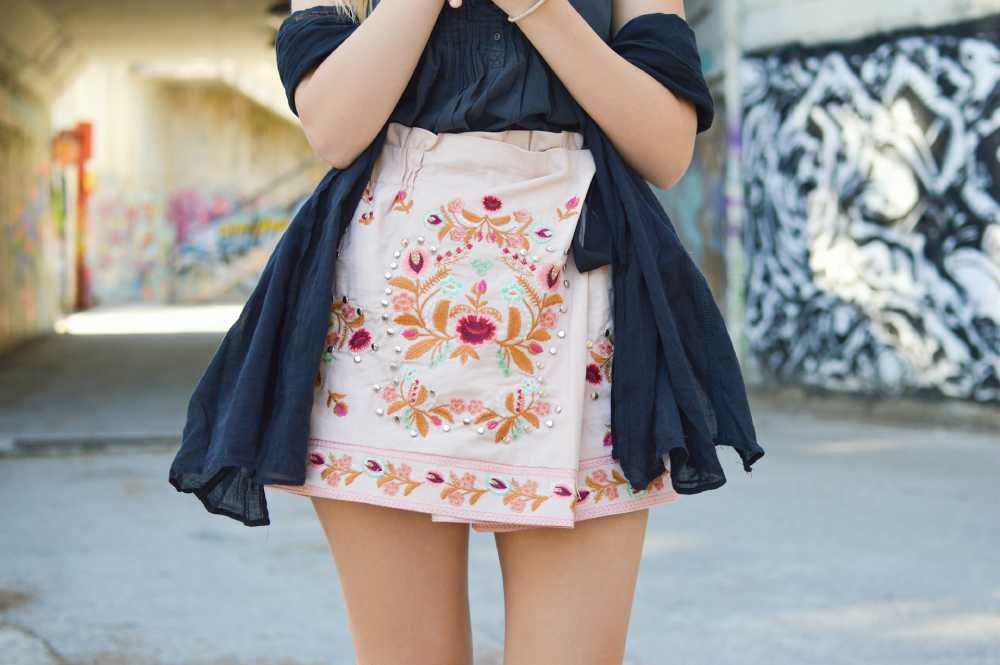How Skirt Styles Have Transformed Through the Decades
The evolution of women’s skirts is more than a mere chronicle of changing fashion; it reflects society’s shifts, a narrative of cultural expectations, and a beacon of artistic expression. The historical voyage of the skirt has witnessed transformations influenced by various elements—from the need for practicality in ancient civilizations to the expression of empowerment and individuality today.
For those curious about the spectrum of styles available, one need only look at ladies’ skirts online to witness the diverse range of choices that draw inspiration from each epoch, discreetly nodding to the fashions of yore while propelling towards a modern aesthetic.
Choosing the Right Skirt for Your Body Type
Discovering the ideal skirt entails aligning its design with individual style and body shape. A prime example is the A-line skirt, universally flattering as it delicately widens from the waist, complementing the hips while accentuating the waistline.
Explore a diverse range of ladies skirts online to find the perfect match for your silhouette and fashion preferences. For those with an hourglass figure, the form-fitting pencil skirt celebrates curves without compromising sophistication or comfort. It’s about identifying the lines and lengths that highlight your best features and make you feel confident and stylish.
The 1950s: A Decade of Full Skirts and Femininity
In the 1950s, the fashion industry saw a surge in the production of skirts that exuded grace and decorum. The iconic circle skirt burst onto the scene, a symbol wrought from the freedom and prosperity of the era. It became symbolic of a longing for tradition and stability after the turbulent war years—a sartorial counterpart to the white picket fences sprouting up in the suburban dreamscapes of post-war America.
While some skirts in this era featured playful prints depicting leisure and abundance scenes, others followed a more sophisticated route with sumptuous materials and understated elegance.
1960s and 70s: Breaking Boundaries with Mini and Maxi
The late 1960s erupted with revolutionary spirit, challenging the status quo and infusing the fashion world with radical change. The mini skirt emerged, scandalous to some, yet swiftly embraced by others as the quintessential garment of freedom, youth, and modernity. With designers like Mary Quant at the forefront, the mini skirt symbolized liberation and echoed the voice of an emerging youth culture.
As the 1970s unfolded, the pendulum swung to the opposite extreme with the maxi skirt. It captured the essence of a generation eager to embrace the bohemian, wandering lifestyle, a stark contrast to the structured and refined silhouettes of prior decades.
1980s and 90s: Power Dressing and Grunge Aesthetics
As women entered the workforce in droves, the 1980s marked the rise of power dressing. The pencil skirt became a staple of the professional woman’s wardrobe, symbolizing a command of authority and femininity in one fell swoop. In stark contrast, the 1990s introduced a counter-narrative to this polished image—the grunge movement.
Led by a generation of music enthusiasts and fueled by the sounds of Nirvana and Pearl Jam, this movement embraced a more relaxed approach to skirt fashion, showcasing frayed edges, plaid patterns, and a general sense of sartorial anarchy.
The Turn of the Century: Y2K Styles and the Denim Domination
As the millennium turned, the world braced itself for the Y2K era with trepidation and excitement. This epoch in skirt history witnessed the denim skirt rise to unprecedented popularity.
Elevated from its humble origins as workwear, denim skirts of various lengths and designs infiltrated the fashion landscape, offering versatility and durability. As a go-to choice for countless ensembles, the denim skirt was identified as both a casual staple and a canvas for stylistic experimentation.
Current Trends in Skirt Styles
In the contemporary fashion milieu, skirt styles are as dynamic as ever, straddling the line between reverence for tradition and a nod to the future. The spectrum is vast and varied, from the floating layers of a tulle midi to the structured lines of a high-waisted wrap skirt.
Tech advancements have given rise to intelligent textiles, allowing for adaptive and interactive garments. Incorporating sustainable fabrics has also become a priority as consumers grow more environmentally conscious. These trends underscore the industry’s cognizance of modern women’s needs and values.
How Fashion Icons Have Shaped Skirt Styles
Throughout the ages, fashion icons have played pivotal roles in immortalizing certain skirt styles. Audrey Hepburn’s effortless grace brought the A-line skirt into the limelight. At the same time, Sarah Jessica Parker’s portrayal of Carrie Bradshaw catapulted the tutu skirt from the ballet stage to the urban streets.
These icons have worn garments and turned them into symbols of their eras, defining the zeitgeist with their influential choices.
The Future of Skirts: Innovation and Eco-Fashion
The future of skirts is intertwined with advancements in sustainable fashion. Designers now regularly explore renewable materials and ethical production methods, demonstrating that style need not be sacrificed for environmental responsibility.
As The Role of Sustainability in Fashion’s Future highlights, there is a concerted effort within the industry to reshape how garments are made and consumed, with skirts no exception.
How to Style Skirts for Different Occasions
The skirt’s versatility makes it an apt choice for many occasions. It can be dressed up with heels and a silk blouse or down with sneakers and a graphic tee—the secret lies in the transformative power of accessories and layering.
A classic black skirt, for instance, can serve as a canvas for bold jewelry or a pop of color with a statement bag. Whether for a day at the office or an evening soiree, the skirt remains an ever-adaptable component of the modern woman’s wardrobe.

